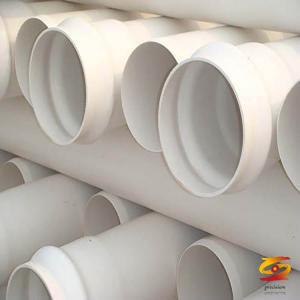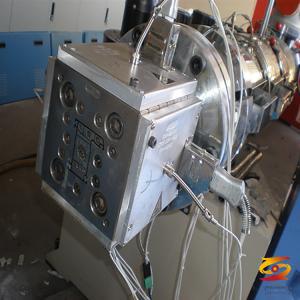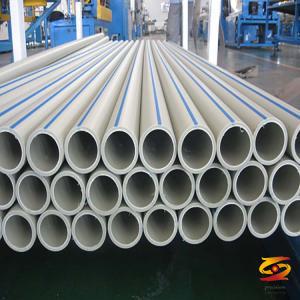The teacher taught you what is extruded polystyrene board (xps board)?
The teacher taught you what is extruded polystyrene board (xps board)?1. What is extruded polystyrene foam board (abbreviated as extruded polystyrene board or XPS)?
Polystyrene resin or its copolymer as the main component, adding a small amount of additives, through heating extrusion molding to produce a rigid foam plastic sheet with a closed cell structure. In the technical literature or technical hand, sometimes expressed as XPS .
2. What is the production process of XPS?
Its production process is relatively simple. Its main raw material is polystyrene. At the same time, in order to give it the necessary physical and chemical properties and processing performance, it is necessary to add the necessary materials such as foaming agent, flame retardant, nucleating agent, etc. These raw materials are added to an extruder with a very stable pressure, where they are mixed, melted and homogenized, then uniformly extruded from the die, rolled by the pressure roller, and cooled by a vacuum forming zone Fixed forming. According to the product design and user requirements, it can be tailored to the required geometric dimensions. The thickness of the sheet is controlled at the extrusion die.
3. What are the excellent properties of extruded polystyrene board?
(1) Excellent and long-lasting thermal insulation performance
Polystyrene is an organic resin with a very low thermal conductivity. According to the Swedish standard SS 02421 1, ASTM C578 test data from the American Society for Testing and Materials Standards, the thermal conductivity of the extruded polystyrene board is 798 0.0289W/(m&8226;K) at an ambient temperature of 24C for up to 180 days. . The thermal conductivity of foamed polystyrene board is about 30% higher.
As any organic material, there is an aging problem. During the aging process, some of the thermal insulation gas in the material will be gradually emitted, and the thermal conductivity of the material will increase. For example: polyurethane products have a higher thermal resistance value of 1.1m2 & 8226; K/W in the initial 180d, which is higher than 0.88m2 & 8226; K/W of extruded polystyrene board. However, due to the aging effect, with the passage of time, its thermal insulation ttli force can drop by up to 30%. The thermal insulation performance of the extruded polystyrene board can be maintained within 90% to 95% of the thermal insulation performance value at 180 days of its initial use within five years. That is to say, with the increase of time, its thermal conductivity only slightly decreased.
(2) Excellent moisture resistance and steam penetration resistance
As we all know, most thermal insulation materials will increase their thermal conductivity after they are exposed to moisture or water. This leads to a decrease in thermal insulation performance, which must be avoided when using thermal insulation materials. Because the molecules of polystyrene are hydrophobic, and the extruded polystyrene board has a complete closed-cell structure, its water absorption is very low. Even in the state of low temperature freezing, it has high resistance to moisture penetration, thus ensuring that its thermal insulation performance will not be greatly affected.
Extruded polystyrene absorbs very little moisture at the initial stage of use. When the water absorption reaches 0.3% ~ o. At 5%, the water absorption rate is almost a horizontal line. This property makes it have a high thermal resistance maintenance rate and can be used in any humid working environment without affecting its thermal insulation performance.
(3) Excellent compression resistance
Extruded polystyrene foam board is manufactured under high temperature and high pressure process conditions, so the structure is very uniform and dense. Through the control of process parameters, the products can have different compressive strengths, and the range can be controlled at 150 ~ 600kPa.
(4) Good flame retardant performance
Extruded polystyrene board, like other organic plastics, is a substance that can burn under an open flame. In the manufacturing process, adding flame retardants, manufacturers can provide users with flame retardant and flame retardant products, in the case of small fire sources, flame retardant self-extinguishing. However, at this time its volume will be significantly reduced or melted.
(5) High-quality environmentally friendly products
Extruded polystyrene board has stable chemical properties, no volatilization of harmful substances, no decomposition or mildew, and good corrosion resistance. In production, the use of environmentally friendly raw materials does not produce harmful gases. The batching and melting processes in production are all completed in closed equipment, using electrical energy. All the scraping waste generated in the production process is fully recycled, and no solid waste is generated; it can be recycled and reused, and it is a recyclable and environmentally friendly product.
(6) It is easy to manufacture and process into a variety of geometric shapes, and it is easy to cut and easy to install and construct
Using different equipment and molds, plates with different cross-sectional shapes can be produced according to design requirements. At present, there are basically four types of plates with different cross-sectional shapes.
Rectangular plates are the most commonly used standard plates. When good sealing is required at the joints of the plates, fish-scale and tongue-shaped plates become the best choice. Because, at their junction, a longer penetration path can be provided, which effectively increases the resistance of liquid penetration and achieves a better sealing effect. Bevel-shaped plates are commonly used on roofs to adapt to the shape of the top of the bevel layer. Zigzag plates are commonly used in foundation walls connected to foundation drainage ditches and grit drainage systems.
Although extruded polystyrene board has a high compressive strength, it is easy to cut with a knife, coupled with its low density and light weight, therefore, it is easy to handle and install at the construction installation site, thereby improving the efficiency of construction operations and saving Labor, reduce costs.
4. Extruded polystyrene board is widely used in construction. In what ways can it be applied? Plastic polystyrene board is widely used in construction, mainly:
①It is used for roofing (metal structure roofing, new brick-concrete structure roofing, old roofing, etc.) to play the role of heat insulation, moisture proof, waterproof and impact resistance;
②It is used in the building's underground wall foundation, the outside of the brick wall foundation or the concrete wall foundation for external insulation, playing the role of thermal insulation, moisture-proof and waterproof;
③Application of building ground and living room ground;
④Application of square ground foundation;
⑤ Used for ground frost heave control in cold areas;
⑥It is used in low-temperature storage facilities (such as cold storage) to give full play to its advantages of resistance to water vapor penetration and good thermal insulation performance.
5. How to apply inverted roof and extruded foam board in inverted roof?
The roof with the waterproof layer under the insulation layer is usually called the inverted roof or the reverse roof. This roofing practice began in the 1940s and was first applied in the United States. It was not introduced into Germany until the mid-1970s. Subsequently, the Nordic countries and Japan have successively researched and developed this new roof. In the 1970s, my country also carried out experimental research on inverted roofs. However, it was unsuccessful due to the lack of a water-repellent, heat-insulating and high-strength building material. In recent years, there have been materials in China that can meet these functional requirements at the same time, that is, extruded polystyrene foam board, which provides a material basis for the promotion and application of inverted roofing in my country.
The advantage of the inverted roof is that due to the protection of the insulation material, the waterproof material is protected from the damage caused by the dramatic fluctuations in the outdoor air temperature, the effect of ultraviolet radiation, and the construction workers walking back and forth, thereby greatly extending the useful life of the waterproof material and effectively The problem of water leakage from the roof was solved.
The inverted roof insulation structure can also be used to renovate old buildings. Extruded polystyrene board can be directly placed on the old roof as a thermal insulation material.
Under normal circumstances, the extruded polystyrene board can be dry-laid and connected underneath in the structure, and only need to be simply pressed and fixed according to the wind resistance load requirements of the roof of the building itself. Generally, prefabricated concrete blocks or pebbles can be used. If necessary, concrete can be directly poured on the extruded polystyrene board and connected to the bottom to form a rigid whole.
If you want to know more about it please do not hesitate to
contact me. WhatsApp:+86-15966835076.









